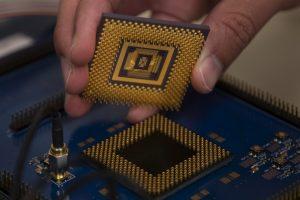Three weeks ago EDACafe took a look at Intel’s neuromorphic computing initiative based on the Loihi chip, that was described in a paper on January 2018. Let’s now move a few years back and a few miles south – from Intel Labs in Santa Clara to IBM Research Center in Almaden Valley – for a quick overview of Big Blue’s neuromorphic computing initiative based on a chip called TrueNorth, developed by a team led by Dharmendra S. Modha.
The DARPA grant and TrueNorth’s ancestors
As recalled by Modha in his blog, in 2018 the TrueNorth project celebrated its tenth anniversary. The year 2008 marked a key milestone in the history of this initiative, when the IBM team – along with partners from several universities – was awarded a contract under the DARPA SyNAPSE (Systems of Neuromorphic Adaptive Plastic Scalable Electronics) program. Researchers from the IBM team then spent a couple of years studying the most recent findings from neuroscience – placing special attention on the brain of the macaque monkey – and running a series of simulations on IBM Blue Gene supercomputers. In 2010 the team started building two prototype silicon chips, dubbed San Francisco and Golden Gate; both had 256 neurons, about the number found in the nervous system of a worm. Spiking neural networks implemented on those chips proved capable of simple cognitive behavior, such as playing Pong, recognizing handwritten digits, or driving a simple simulated car.









